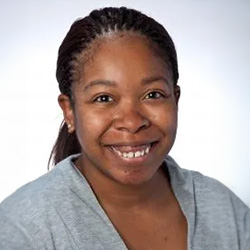New Algorithms and Pathways: Eating Disorders, Head Shape and Febrile Seizure
March 1, 2023
Eating Disorders
The Adolescent Medicine team, in partnership with the Department of Psychiatry, at Seattle Children’s has created an eating disorders algorithm to help PCPs know when and how to refer patients with disordered eating to Adolescent Medicine, Psychiatry and Behavioral Medicine (Psychiatry) or, in some cases, both.
 Dr. Yolanda Evans, Adolescent Medicine, Eating Disorders Recovery Program
Dr. Yolanda Evans, Adolescent Medicine, Eating Disorders Recovery Program“We have a very high number of kids coming to our program for care, and our referral processes have changed over the last year as we’ve made care more accessible,” says Dr. Yolanda Evans. “We hope this new algorithm will clarify the referral process and help kids get their care started as quickly as possible.”
Patients referred to Psychiatry will meet with a clinical psychologist initially. If medication evaluation is needed, a separate appointment will be made with a prescribing provider (either an ARNP or psychiatrist).
“If the referring provider knows at the outset that their patient will need medication evaluation, they can submit 2 separate referrals initially to Psychiatry to speed up the process – one for the behavioral health evaluation with the psychologist and a second referral for medication evaluation with our psychiatrist or ARNP,” says Dr. Evans.
For those referring providers who request management of physiologic complications from malnutrition, all patients referred to Adolescent Medicine will receive a one-time telehealth consultation with a medical provider after which families will be offered support and resources to continue the patient’s care, either at Seattle Children’s if appropriate and care is available, or in the community. The Eating Disorders team will share the after-visit information with the referring provider to help guide continuing care of their patient.
The eating disorders algorithm is available along with 65+ other condition-specific resources for PCPs at seattlechildrens.org/algorithms.
As a reminder, when referring a patient for eating disorders, please include their growth charts and exam notes. You do not need to send labs or an ECG; we removed this requirement last year to reduce work for PCPs and help patients be seen sooner.
For more details about referral requirements and additional resources for PCPs, please visit our Eating Disorders – Refer a Patient page. You may also like to read “Treatment for Eating Disorders: A Q&A and Case Study by Robyn Evans, ARNP” from our March 2022 issue of Provider News.
Head Shape
Seattle Children’s Craniofacial team has created a head shape algorithm to help PCPs evaluate and refer their patient to either Craniofacial or Physical Therapy depending on their presentation.
For infants under 4 months who have positional plagiocephaly or positional brachycephaly but don’t have limited range of motion or neck tilt, the algorithm recommends repositioning strategies with reassessment at 4 months. However, these babies are welcome to be referred directly to Craniofacial if the provider feels they need to be evaluated before 4 months. Repositioning resources are available on the Seattle Children’s website, with links provided in the algorithm.
Febrile seizure pathway
Seattle Children’s has updated its clinical standard work pathway for febrile seizure. Key changes include updated admit criteria and risk of intracranial infection guidance. Additional clinical standard work pathways for dozens of other conditions are available.